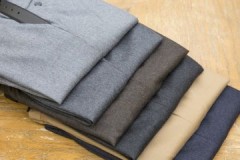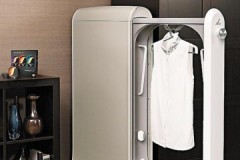Gentle ironing secrets: how to iron organza after washing?
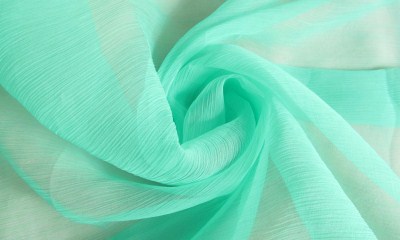 Light, airy dresses, exquisite curtains of flowing organza: many people prefer to refuse all this beauty, fearing laborious ironing of delicate fabric.
Light, airy dresses, exquisite curtains of flowing organza: many people prefer to refuse all this beauty, fearing laborious ironing of delicate fabric.
How to quickly iron organza after washing and can this process be avoided altogether?
Ironing secrets will help to achieve the perfect result with minimal investment of time and effort.
Content
If necessary?
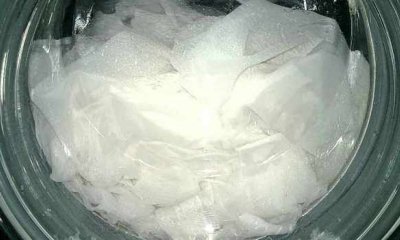 When washing and drying organza is done correctly, you can avoid ironing this airy, silky fabric.
When washing and drying organza is done correctly, you can avoid ironing this airy, silky fabric.
So use only special detergents for delicate fabrics for washing, the water temperature should not exceed 35-40C.
When washing the organza in the washing machine, the number of spinning revolutions should not exceed 500 (or it is better to turn off the spin function altogether). When washing by hand, it is strictly forbidden to wring out the fabric with your hands.
Correct drying will help avoid tedious ironing... For this, clothes (dresses, sundresses, fluffy skirts) are hung on hangers, and the curtains are hung wet on the cornice.
How to wash organza in the washing machine, so that you don't iron it later, the video will tell you:
How to do it?
Iron the organza after washing in several ways:
- with an iron,
- steam generator.
Let's consider each of them in more detail.
Iron
To achieve a perfect ironing result and avoid damage to the fabric, you must adhere to the following recommendations:
 before ironing, be sure to check the cleanliness of the iron soleplate (the slightest scratches and dirt leave roughness on the silky surface);
before ironing, be sure to check the cleanliness of the iron soleplate (the slightest scratches and dirt leave roughness on the silky surface);- the iron is heated to a certain temperature (100-140C);
- a product made of delicate fabric is laid out on the ironing board with the wrong side (it is not recommended to iron a delicate fabric on the front side);
- during ironing, the iron is quickly moved over the fabric (without pressure);
- A piece of white gauze through which a thin fabric is ironed will help protect the organza from deformation.
If the linen is very wide, it can be rolled up in several layers on the ironing board.
We use a steam generator
Steam will help to eliminate creases and folds, to quickly smooth the organza.
Using the steam generator is simple:
- clothes for ironing are hung on a special rack - hangers, curtains on the cornice;
- using the vertical steam function, delicate fabrics are smoothed out in seconds.
Features of ironing depending on the fabric
Temperature conditions, ironing features are determined by the type of organza:
- silk,
- polyester,
- viscose.
Silk
High cost of silk organza provides a number of restrictions on ironing:
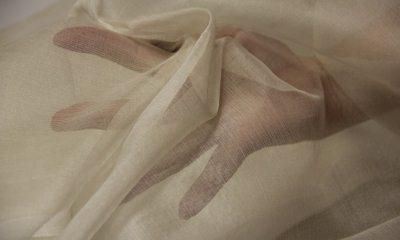 Iron only on a slightly damp cloth. If the silk organza is dry, it must be sprinkled with water and placed in a plastic bag for half an hour to distribute moisture evenly over the fabric.
Iron only on a slightly damp cloth. If the silk organza is dry, it must be sprinkled with water and placed in a plastic bag for half an hour to distribute moisture evenly over the fabric.- Silk organza is ironed only at a temperature not exceeding 140C (or the “silk” option on the iron regulator).
- Silk is never ironed wet. First, the tissue can change its structure (become more violent), and yellow spots can appear on the organza.
- Silk organza is ironed only on the seamy side.
- When using a steamer for ironing silk, the steam pressure should be low with a fine spray of moisture (otherwise the fibers will lose their strength).
Polyester
Synthetic fibers create not only durable, but also wear-resistant fabric, very often does not require ironing. It is enough to hang out the wet product, spread it and let the water drain.
In a situation where, after washing, polyester clothes are still wrinkled, the following recommendations will help to sort them out:
- before ironing, the damp item should hang on the hanger.
- when it comes to curtains, they are hung wet on the cornice;
- ironing a dry cloth at a temperature of 100C (or option "nylon" on the iron);
- heavily dented polyester is ironed through damp gauze;
- it is undesirable to use a steamer for ironing polyester, as the thing may lose its shape.
Viscose
Soft viscose is very wrinkled after washing, so you cannot do without ironing.
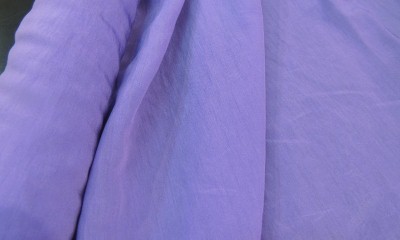 The following tips will help you quickly eliminate wrinkles in viscose:
The following tips will help you quickly eliminate wrinkles in viscose:
- ironing is carried out at a temperature of up to 150;
- viscose fibers are very thin, therefore ironing takes place at an accelerated pace (you cannot linger for a long time and drive the iron in the same place);
- the viscose is ironed through damp gauze;
- viscose is never steamed, as the steam leaves streaks on the fabric, stretches it.
Tips and bans
The following tips will help you avoid ironing mistakes:
- Wrinkles are easily removed by ironing them through damp gauze.
- The temperature regime for organza never exceeds 140 C.
- The organza is ironed intensively, but without strong pressure. Thin, light fabric, even with a minute delay of the iron in one place, can change color and structure.
- Strong creases and creases are effectively removed with a steamer. Steam exposure is carried out at a distance of at least 15 cm from the material.
- Always check the heated iron on an inconspicuous area of the fabric before ironing. Particular attention is paid to the first ironing of organza products.
Conclusion
You can appreciate the beauty of silky organza only if you follow the rules of care (washing and ironing) for this delicate, airy fabric.

